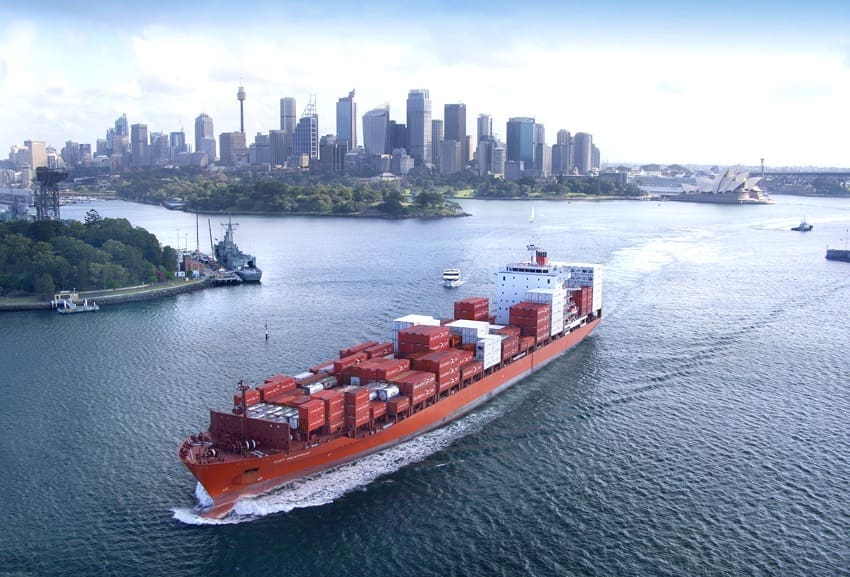
AUSTRALIA’S beef exports last calendar year crashed to a 19-year low, as the combination of low slaughter cattle numbers available due to herd rebuilding after drought, weather disruptions and processing labour resource challenges took a heavy toll on performance.
Uncompetitive meat pricing due to record-high Australian livestock prices also clearly played a part in trade in many markets.
Total beef export volume to all markets last year reached just 854,592 tonnes – the lowest seen since 2003 (840,929t), when global alarm over BSE (mad cow disease) dramatically slowed beef demand into markets like Japan, the US and Korea.
Last year’s result crept even lower than the previous 2021 year (887,679t) which to that point was the lowest volume year since the 2003 BSE event.
At their peak during the 2018-19 years when drought-driven herd liquidation was in full swing, Australia’s beef exports topped 1.25 million tonnes in successive years – representing a dramatic 395,000t or 32pc decline in the level of trade seen last year.
However the worst of the cycle is now behind us, with Meat & Livestock Australia’s most recent forecast anticipating a rise this year to 1.065 million tonnes carcase weight export volume, before a return to more normal levels of 1.14mt in 2024.
The effect last year was intensified further by good to excellent seasonal conditions across most cattle areas of Australia, motivating beef producers to hold as many cattle as possible for rebuilding purposes, and to add further carcase weight.
All major and emerging export customers were impacted by Australia’s supply-side challenges last year, however trade access, through both direct and indirect barriers as well as political tensions, also played a part.
Export trade during the final month of December was lacklustre, to say the least, despite some of the biggest weekly national adult cattle kills seen for the entire year. Total December export volume reached 76,118t, down 1pc on the same time the previous year, suggesting some of that boxed beef may be carried over into January trade, or sold into the domestic market.
Japan easily topped Australia’s largest beef export customers last year, accounting for 214,305t of Australian chilled and frozen beef during 2022. That figure was sharply down on trade seen the previous year – back almost 20,000t or 8.3pc, due primarily to strong competitive pressure from the US, which exported record volumes in 2022 due to its own extreme drought. By comparison, two years earlier in 2019, Australian exported 288,000t of beef to Japan.
Last month’s trade to Japan reached just 16,429t, down 2.4pc on the previous December figure.
South Korea finished the 2022 year with 160,725t of Australian beef, marginally down on the year before, again reflecting Korea’s reputation as one of our most stable and reliable export customers. December trade at 16,125t was up 6.23pc on the corresponding period last year.
Weighed down by further COVID outbreaks and other issues, the China export market continued to lose more of its gloss for Australian exporters again last year, accounting for 158,086t – up marginally from the year before, but a long way from the 2019 year when the market imported 300,000t of Australian beef. December trade to China reached 12,950t, down 6.2pc on the same time last year.
Partly explained by its own abundance of domestic beef this year due to drought liquidation, the United States last year took just 133,925t of Australian beef, down from an already low 145,263t the year before. Remarkably, this ranked the US as only Australia’s fourth largest export beef market for the year.
Both last year and the year before were less than half of the numbers seen in the US market heyday, when Australian consistently sold 270,000t to 300,000t of grinding beef into East and West Coast US ports each year.
Among secondary markets, last year was a mixed bag, with some up, but most down on trade seen the year before.
Indonesia finished the year with 39,324t of Australian beef, mostly frozen. That was down about 5800t or 13pc on the volumes seen back in 2021. Taiwan accounted for 21,882t of beef, down 6pc on the previous year, while the Philippines imported 22,925t, down 15pc.
The seven customer countries represented by the Middle East region accounted for 28,060t of Australian beef last year, down another 7pc on the year before, as Australia’s relatively high-priced beef was challenged by cheaper options out of South and North America.
In the absence of any working Free Trade Agreement with either party, the total European Union region took just 7069t of our beef last year, while the UK sank to a paltry 741t. Any breakthrough with a UK FTA this year, and potentially followed by the EU, could see numbers restored closer to historical levels.
Processing labour challenges loom as biggest limiting factor
While access to slaughter cattle is anticipated to rise across Australia this year as the industry faces a third consecutive year of above average to excellent seasons, labour supply challenges present as the biggest potential constricting factor in beef production capacity in 2023.
Export processors got away with staffing levels over the previous two years of extremely low kills – the lowest seen in 37 years – but any significant rise in numbers of cattle presented this year could test the industry’s ability to cope, processing sector stakeholders fear.
